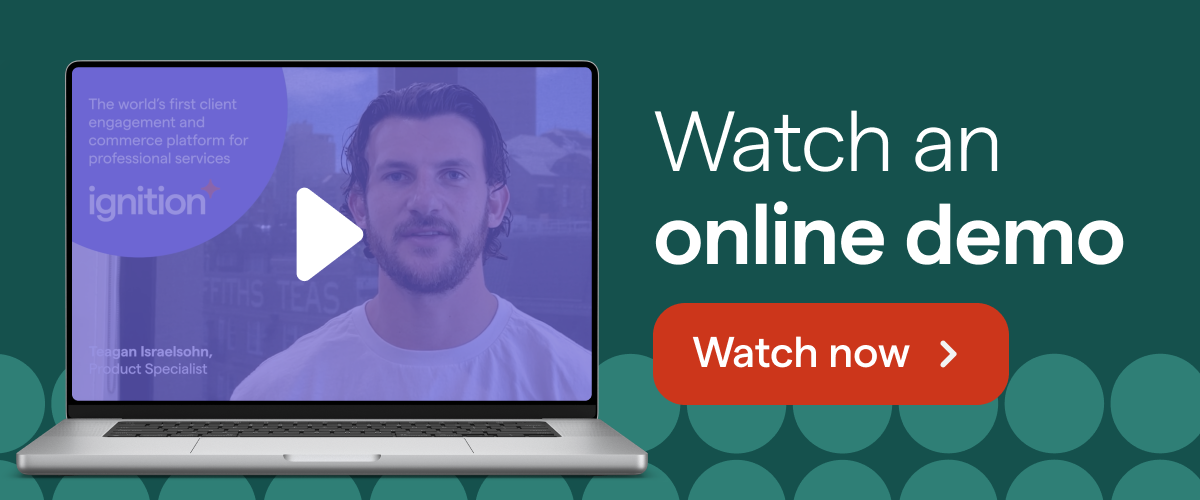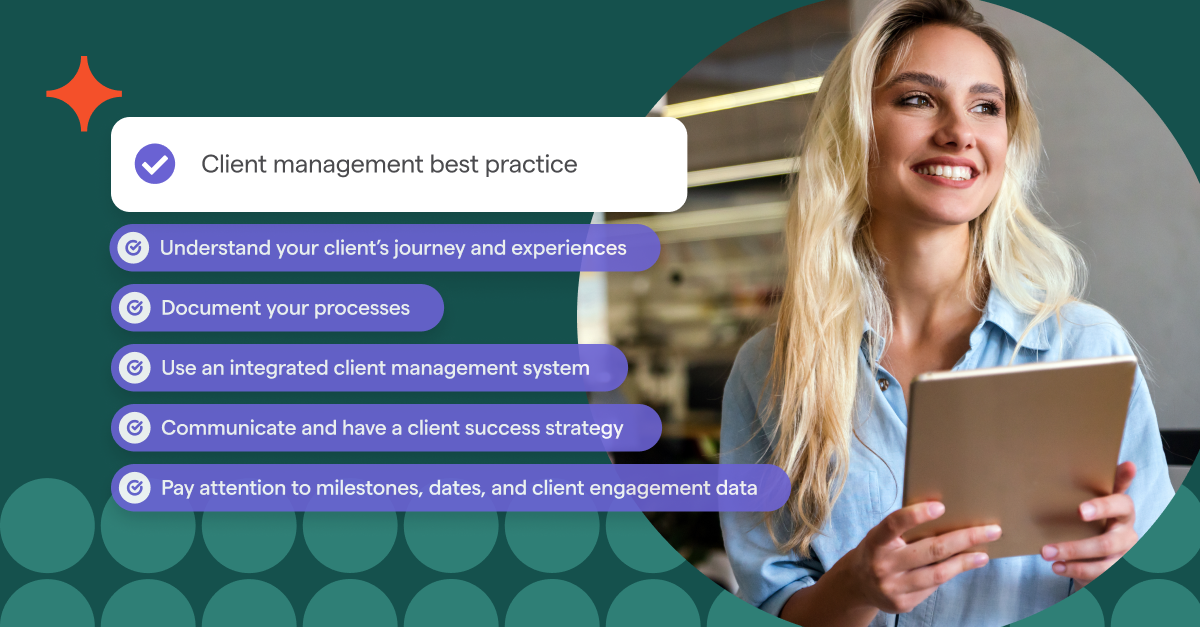7 Workflow optimization tips to improve your productivity

As a professional service provider, you know that the success of a project depends largely on its workflow.
For accountants and bookkeepers, this involves the steps you take to examine, analyze, and process your client’s invoices, receipts, and bank statements to create financial statements and tax returns. Besides the actual services you offer, you’re also going to spend time prospecting, creating business proposals, onboarding new clients, and billing existing ones.
These often involve repetitive tasks like chasing down payments or copying data from spreadsheets to other software solutions. If your business processes aren’t efficient enough, you may be wasting your time and energy, and could even end up losing money.
Thankfully, by optimizing your project management workflow, you can eliminate all those bottlenecks that are costing you time, money, and peace of mind. In this article, we’ll take a look at some great workflow optimization tips that can vastly improve your business productivity.
What is workflow optimization?
Workflow optimization is the process of removing bottlenecks and inefficiencies in your business workflow to improve time, resource, and cost utilization.
Creating a streamlined workflow needs both a human and process-centric approach. Factor in human behavior as well as aspects such as repetitive work and the availability of necessary tools and information.
An optimized workflow streamlines tasks at your firm by making information and tools easily accessible to everyone, so employees can be their most productive selves. An example of this could be streamlining your client onboarding process, reducing the time it takes to get a client onboard by automating parts of the process.Why is workflow optimization important?
Many types of challenges may arise during the course of a project’s life cycle. Workflow optimization helps you identify and optimize the inefficient processes before they create problems. As such, it helps you complete your projects in the best possible way.
It also helps your team stick to budgets and deadlines without getting too overwhelmed by the workload.
An optimized workflow helps you better collaborate with your team and minimize distractions for each other. You can avoid having to pull people into unplanned meetings that disturb everyone’s flow.
Finally, workflow optimization can also help you improve your customer relationships. By optimizing and streamlining your client interactions, you can communicate and collaborate effectively and make the most of your workday.
How to improve your workflow and processes
Workflow optimization helps you save time, energy, and resources and also improves your profit and revenue streams by eliminating unnecessary processes. Let’s take a look at some great workflow optimization tips that can help to increase your business productivity.
1. Define the processes
This needs to be the very first step in your workflow optimization strategy. In your accounting or bookkeeping firm, you may need to create proposals, onboard new clients, manage invoicing, manage payroll, and so on. Define all such tasks in detail.
Consider the things you’ve worked on in the past month, and group them into buckets such as accounts receivable, accounts payable, payroll, sales tax filings. Make a note of the team members assigned to each task, the list of activities that need to be performed, and the inputs, outputs, and dependencies for each.
For example, if you’re working on taxes for a client, you’re going to need their bank statements, information about their assets, investments, business expenses, and your deliverables may include completed tax returns or tax receipts.
While defining these processes, it may be a good idea to set a duration for each process. This will give you a clear picture of the key workflows in your firm and delegate them effectively to your team.
2. Analyze your current workflow
In the next step of your optimization process, note down how different processes work together and how one leads to another. You can use tools such as Miro to visualize your workflows. This will help you understand what’s slowing you down and which tasks are being repeated unnecessarily. You can also share this with your team and get feedback on where efficiencies can be made. More on this in ‘3. Gather feedback from team members to build workflows’.
Also, be on the lookout for tasks that are not adding any value to your business or those that don’t require any human-level decision making. See if you can reduce time spent on these by automating the tasks or eliminating altogether.
Look out for any bottlenecks in your existing workflow. Maybe a team member has to wait for someone to provide certain details or maybe one person is handling too much work when others are free. See if you can improve the workflow so the distribution of workload is even cross your team and waiting periods are kept to a minimum.
The objective of your workflow analysis is to find out what’s working and what’s not, so you can move past manual business process management and focus on more critical tasks.
3. Gather feedback from team members to build workflows
Incorporate feedback from key stakeholders and your team when building your workflows. There could be certain aspects of tasks or dependencies that you may not be aware of. Plus, your colleagues may be able to spot the inefficiencies you may have missed.
Collaborating with your team will also help you choose better tools for workflow management. There could be features you didn’t know your team needed. And if you pick a solution that they’re already familiar with, you can get the ball rolling faster.
A collaborative workflow-building effort will also help you get your team on board with the new workflow quickly and ensure high adoption rates.
4. Automate what you can
There are various types of automation software that can make your life easier. For example, many organizations use workflow management systems for training and onboarding new employees, managing payroll and attendance, and so on.
Depending on the nature of services you provide, there are a wide range of automation tools that can streamline your workload. With a platform such as Ignition, you can automate various processes like invoice creation and reconciliation, business proposal and engagement letter creation, and so on.
This ensures you get paid effortlessly and also allows you to provide your clients with a smoother onboarding experience. The platform also offers various templates that your team can leverage in their workflows and processes.
What’s more, all your workflows (for example, client engagement, proposals, onboarding, billing, and so on) can be centralized on one platform which reduces back-and-forth and ensures your team always has access to ‘correct’ information. Besides making things simpler, workflow automation can also improve the consistency and quality of your services.
5. Integrate with your existing tools
Your workflow management software may not come with all the features you need. But if it integrates with a variety of different apps, it can speed up your workflow because you won’t have to operate multiple third-party tools that don’t talk to each other. With seamless integrations, all your data can be synced in real-time.
Ignition connects with your management software, accounting ledger, payroll, and other business-critical solutions so your processes can run on autopilot. That means you spend less time doing admin and more time on what really matters. Through its integration with Zapier, you can also connect to apps such as Slack, Asana, Gmail. It also allows you to streamline your onboarding workflows through integrations with tools such as Intuit Practice Manager, Karbon, MYOB and Xero Practice Manager.
6. Document, analyze, improve, repeat
Workflows are not meant to be set in stone. Market conditions, team dynamics, and even your clients may change.
Once you've developed a workflow, you can track and measure its success. For example, if you’re using a project management tool such as Asana, you can monitor how much time it’s saving your team; if it’s helping to reduce errors by automating manual processes, and if it’s increasing the speed of delivery.
The exact metrics may vary by industry, but tracking them enables you to identify any process improvement opportunities and decide how to act on these.
7. Practice asynchronous communication
Asynchronous communication (communication that doesn’t take place in real-time) can help prevent distractions such as calls or messages that demand your immediate attention. The idea is simple; work in such a manner that enables one-to-many communications, such as email, to happen in the background and not in real-time.
There are several tools you could use to communicate asynchronously. Examples include email and project management tools such as Asana or Basecamp; video communication tools such as Loom, Prezi, and collaboration tools like Google Drive, Dropbox. However, it’s best to choose a single tool for communicating project statuses and updates to ensure everyone is on the same page.
Finally, foster a culture of minimizing meetings, especially unplanned ones. This will help to boost productivity as your teams can focus on what’s truly important while keeping distractions at bay.
Over to you
Efficient workflows can help you get more done in less time and saves you the stress that comes with poorly planned workflows. Invest in the right tools to streamline your workflow that keeps your clients happy, your staff engaged, and your business growing steadily.
With Ignition, you can optimize your workflows and take your firm to new heights. Learn more by watching an online demo.


